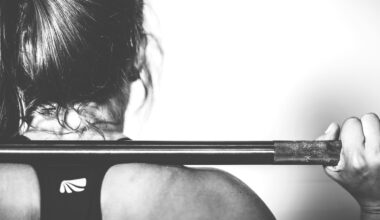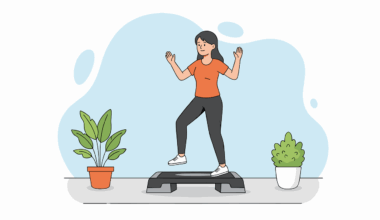Beginner’s Guide to Ski and Snowboard Lessons: What to Expect
Embarking on a ski or snowboard journey can be both exhilarating and daunting. If you’re a beginner, it’s essential to understand the structure and nature of lessons provided at ski schools. These lessons cater to individual learning styles, ensuring that everyone, regardless of their background or athletic ability, can learn effectively. Most ski schools offer different levels of classes, starting from absolute beginner to advanced. When you arrive, your instructor will assess your skill level, which is a crucial first step. Equip yourself with the appropriate gear for your lessons. Renting gear is a viable option if purchasing isn’t feasible. Many resorts provide rental services right on-site, making the process seamless. Emphasizing safety, most instructors will review important safety rules before hitting the slopes. This preparation serves to ensure that beginners understand their surroundings and how to ski or snowboard safely. Learning the basics of balance, turning, and stopping is part of the initial lessons. These foundational skills will not only enhance your ability but will also make your time on the slopes much more enjoyable.
The Importance of Choosing the Right Ski School
Selecting the right ski school can significantly affect your learning experience. Begin by researching various schools at your chosen destination. Look for schools with positive reviews, professional instructors, and tailored lesson plans. Most reputable ski schools have trained staff with certifications, ensuring they possess the necessary expertise to teach. You may consider factors such as class size, as smaller groups often provide more personalized attention. When you arrive, your instructor will typically explain what to expect during your lessons, creating a comfortable and inviting atmosphere. Prioritize schools that emphasize learning through fun, as this method instills confidence while developing skills. Many instructors now employ modern teaching techniques, such as using video analysis to provide visual feedback. This approach allows you to observe your form and progress, which can be incredibly beneficial for beginners. Additionally, inquire about packages that combine lessons and lift tickets, often resulting in cost savings. This combination simplifies logistics, allowing you to enjoy more time on the slopes without the hassle of multiple purchases.
Once you’ve chosen a ski school, it’s time to prepare for your first lesson. Understanding the schedule and expectations can calm nerves and set you up for success. Arrive at the ski school at least 30 minutes before your lesson to ensure you have enough time to get ready. This includes picking up rental equipment if needed. Ensure you wear appropriate clothing layers, emphasizing insulation and waterproofing to keep warm and dry. Investing in quality gloves and goggles also enhances your comfort significantly. During the lesson, focus on communication with your instructor; don’t hesitate to ask questions for clarification. Each lesson will likely begin with a warm-up to help your body adjust to physical activity. Instructors will introduce basic techniques gradually, ensuring you grasp each skill. Remember that falling is a part of learning; every skier and snowboarder has been there! Maintaining a positive mindset is key—celebrate small victories and improvements. Expect to practice on beginner slopes, where you’ll have the confidence to experiment with what you’ve learned.
What Gear Do You Need for Ski and Snowboard Lessons?
Before participating in ski or snowboard lessons, ensure you have all the necessary gear to facilitate your experience. Begin with the essentials: ski or snowboard, boots, and bindings. Many resorts provide rental options, so consider this if you’re just starting. Additionally, you will need winter sports clothing designed specifically for warmth and moisture control. Dressing in layers is crucial; this method allows you to adjust your temperature easily throughout the day. Start with a moisture-wicking base layer, followed by an insulating layer, and finish with a waterproof outer layer. Don’t forget accessories such as helmets, gloves, and ski goggles—these items enhance your safety and comfort on the slopes. Many ski schools recommend helmets, especially for beginners, as they significantly reduce injury risk. Ski socks are also important; ensure they are knee-high, thin, and moisture-wicking for optimal comfort. Overall, investing in good-quality gear enhances your enjoyment and keeps you engaged on the slopes. As you progress in skill, you may decide on purchasing your own equipment tailored to your preferences.
Diversifying your skills can also involve exploring different terrains and conditions. As you advance, consider trying park features such as jumps and rails, which provide another level of excitement. Your instructor will guide you through these challenges, focusing on technique and safety. Progressing at your own pace is important; do not rush into advanced skills before mastering the basics. Keep practicing on varied snow conditions to build confidence and flexibility, as this will prepare you for any eventuality on the mountain. If you’re looking for a more social aspect, consider group lessons where you meet other beginners. This connection fosters camaraderie among learners, making every lesson more enjoyable. Group lessons have benefits like motivation and the opportunity to share experiences with peers. Receiving feedback from both your instructor and fellow classmates can help accelerate your learning. Eventually, consider participating in ski or snowboard camps, where lessons extend beyond mere techniques, providing a full snow experience that includes exploring resorts and social events. This exposure ensures that learning continues year-round.
Educational Resources for Skiing and Snowboarding
Several educational resources are available to supplement your learning experience while taking lessons. Online platforms offer quality videos on skiing and snowboarding techniques. Explore websites that specialize in winter sports; they often have community forums where you can ask questions and share experiences. Books on skiing and snowboarding fundamentals can also provide valuable insights into techniques and training regimes. Some instructors even recommend personal coaching, focusing on specific areas of improvement based on your individual needs. Investing in a few professional lessons with different instructors can yield varied perspectives on your skillset. As you continue progressing, consider joining clubs or social media groups designed for skiing enthusiasts. These networks allow for easy sharing of tips, experiences, and recommendations for terrain to explore when not in lessons. Networking within these communities often leads to new friendships and skiing buddies for future outings. Furthermore, mobile apps are being developed to track your skiing performance; these innovations provide valuable data to enhance your skills while giving real-time feedback as you improve.
Finally, it’s critical to remember that skiing and snowboarding are sports designed to be fun. Embrace the social aspect along with the thrill of the ride. After learning the basics, consider planning trips with friends or family. Enjoying the experience with companions elevates every aspect of learning. Celebrate achievements together and share tips on what you’ve learned during lessons. That camaraderie can spark a lifelong passion for winter sports. Incorporating game-like challenges with friends on the slopes can also make practice more enjoyable. These activities enhance skills while fostering a spirit of friendly competition. Every time you hit the slopes, aim to improve—whether learning new tricks or honing existing ones. Also, consider setting personal goals for the winter season, such as mastering a specific technique or increasing your time on the slopes. These goals can guide your learning and make each visit worthwhile. Ultimately, your ski or snowboard journey is about the experiences and memories you create. Approach each lesson with excitement, embrace the process, and enjoy every moment spent in the snow.


